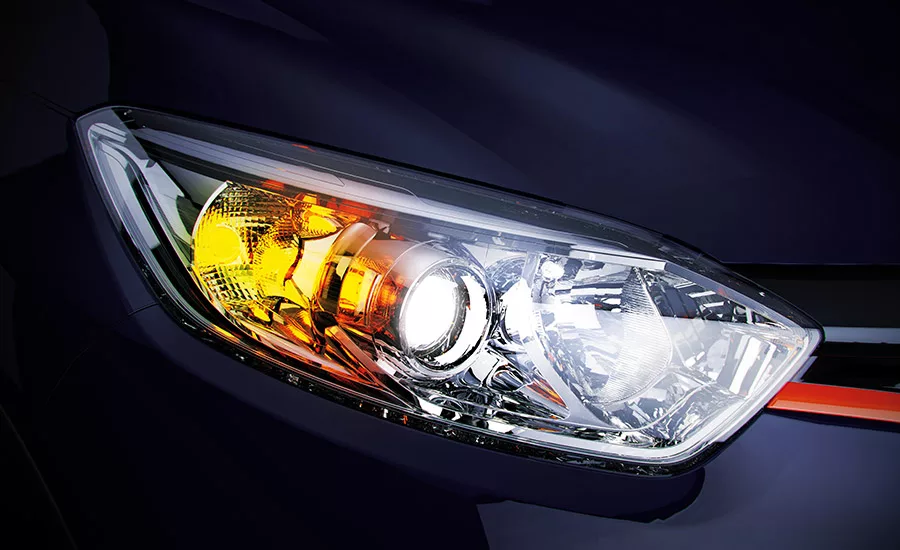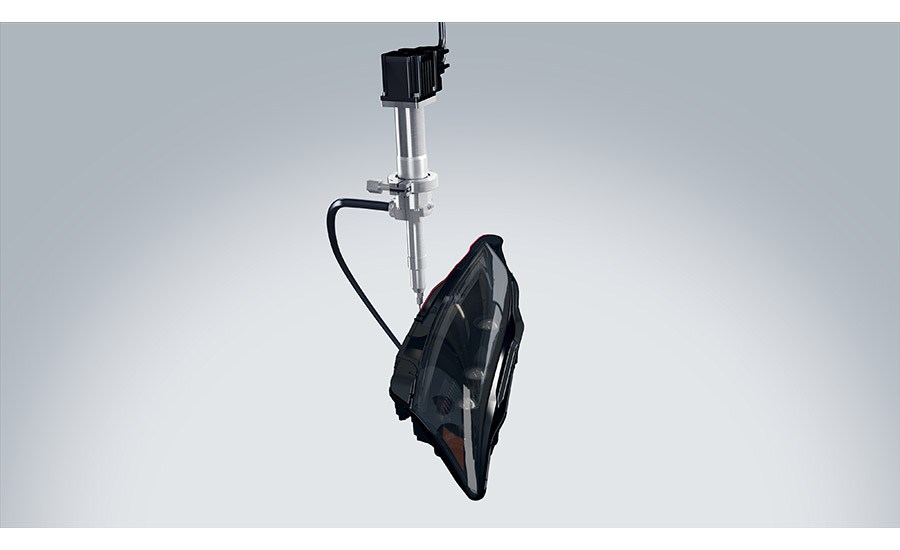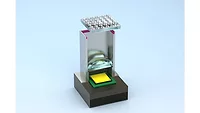Adhesive Dispensing for Automotive Headlights
Headlights for cars and commercial vehicles need to be continuously and consistently well bonded.

Dispensing technologies for the automotive industry play a central role beyond the production of engines, transmissions, and airbags. Even in the production of headlights for cars, commercial vehicles, and heavy-duty transport systems, nothing works without the precise dispensing of 1- or 2-component adhesives and sealants.
The base bodies of automotive headlights must be hermetically bonded to a glass pane, or the internal electronics must be bonded to the housing to avoid vibration using so-called shock absorber dispensed beads. In addition, the connector plugs for the headlights must be encapsulated quickly and without air bubbles.

Headlight sealing with a 1-component sealant. (Image courtesy of ViscoTec.)
The first challenge here is that the dispensing technology must be integrated into the overall process in order to be able to match the process for high performance. For this purpose, for example, an agitator with a 200-liter capacity can continuously provide a highly sedimenting component A (e.g., low- to medium-viscosity 2-component polyurethane adhesive based on polyether/polyester polyols). The focus here is on a consistent, uniform flow; this is the only way to avoid sedimentation of the resin fillers. On the other hand, component B (the hardener) can be sucked into the material treatment system in batches via the means of vacuum.
The second challenge is the goal of maximum efficiency for large-quantity, industrial series production. Technically, this can be achieved by integrating the dispensing technology into the overall process (e.g., 200-m-long ring lines through the production hall). The individual workstations can be served via branching lines and supply the material at continuous intervals.
Companies can meet their requirements for high quality by integrating upstream material treatment. In the case of air-filled and separating material, this ensures that a microbubble-free homogeneous material can be processed.
For more information, visit www.viscotec.com.
Note: Opening photo courtesy of Nikolay Evsyukov via gettyimages.com.
Looking for a reprint of this article?
From high-res PDFs to custom plaques, order your copy today!






